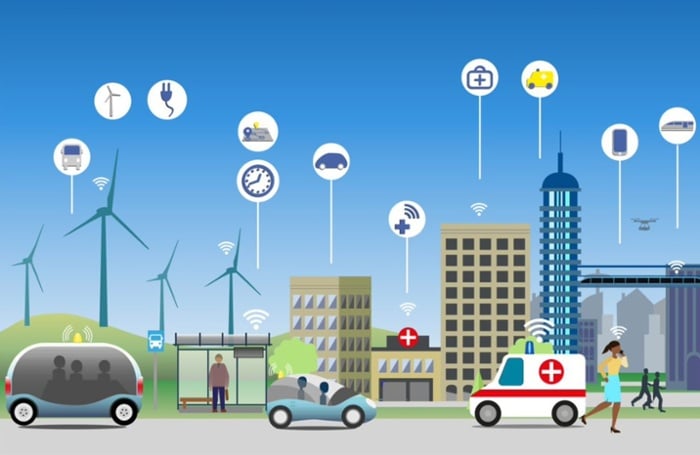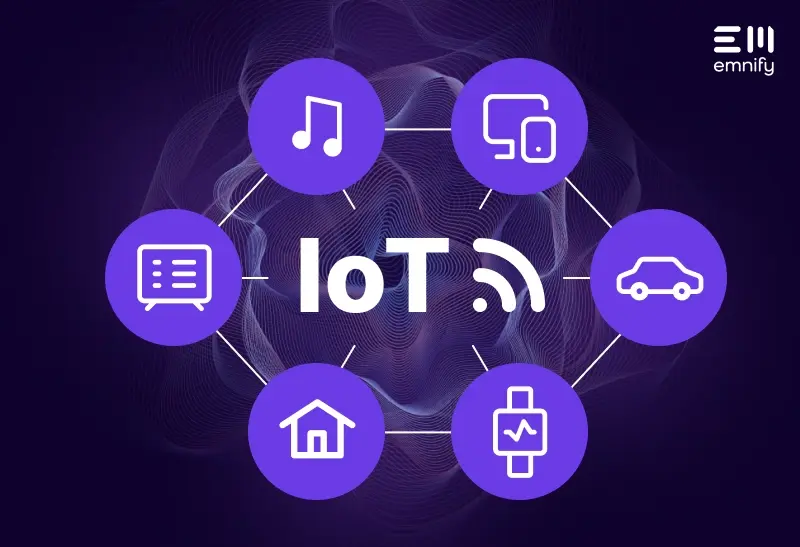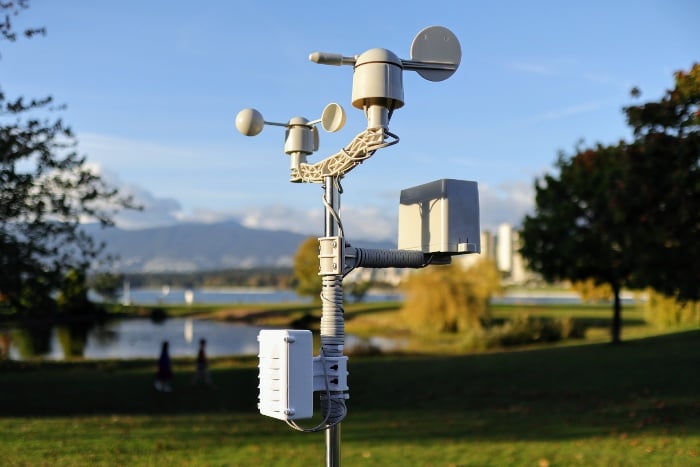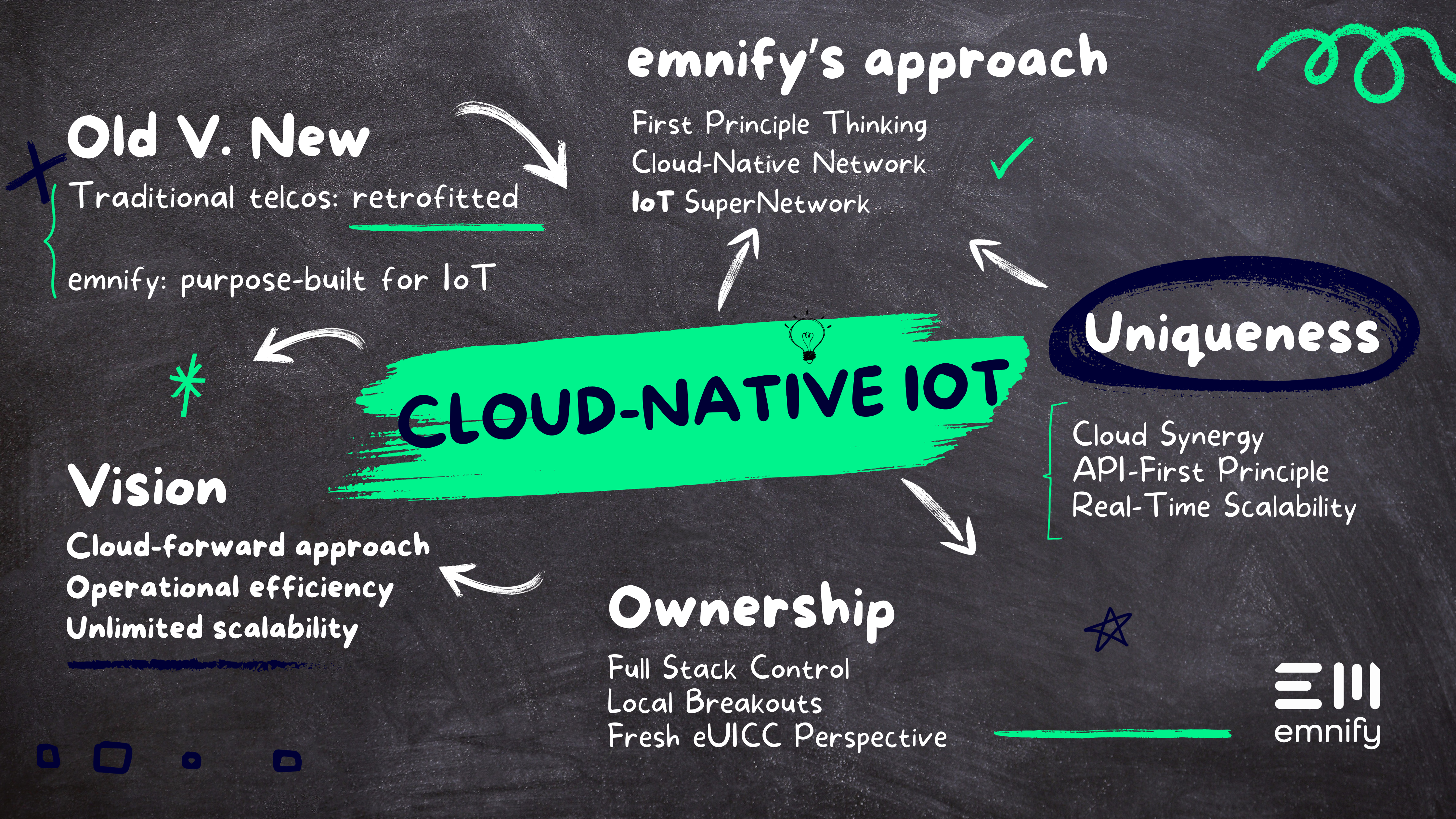

IoT isn’t just another iteration of consumer technology. Traditional IoT connectivity providers tend to repurpose and retrofit networks built for consumer devices such as cellphones, but a critical fact is overlooked: IoT devices are not consumer devices.
IoT devices are machines that typically only interact with other machines, and they have technical and operational challenges that today’s connectivity plans simply can’t address.
Modern IoT businesses need more, which is why my co-founders and I made the decision in 2014 to apply a first principles approach to build a completely new, cloud-native IoT solution from the ground up. emnify is driving cloud transformation, offering an entirely distinctive, customer-focused experience.
In 1993, while many of my friends and peers were waiting for the release of the latest video game or movie, I was busy signing my neighbors and friends up to GSM in my hometown of Wuerzburg, Germany. I was interested in telecommunications from the start and as I look back now, I know that this was the launch pad for my career that has spanned over two decades.
A pivotal moment in my journey happened in 2000, when my co-founder, Martin Giess, and I responded to a request from Lycos Europe to create a free SMS system for its users. This solution grew to be so successful that it evolved into a standalone business, marking our entry into building scalable, innovative communication platforms.
By 2014, I was ready for a new challenge. I was passionate about data and mobile communications, and wanted to create a meaningful service that could connect and grow businesses globally. 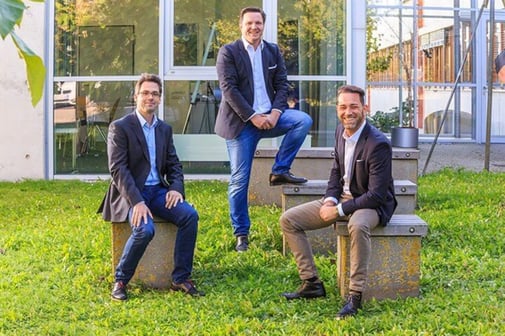
It was at that time that Martin Giess, Alex Schebler, and I co-founded emnify. We believed that cloud technologies would play a central role in IoT connectivity and were determined to make it happen.
Our journey was far from conventional, but that was to be expected. At the time, there was no such thing as cloud transformation or cloud-native IoT.
The approach was to retrofit existing mobile telecommunications infrastructure to suit IoT needs, and to make incremental changes here and there — a method that left IoT customers buying and integrating services that weren’t designed with their business needs and sensitivities in mind.
The three of us actively challenged this convention and refused to settle for the confines of ‘this is how it has always been done’ thinking. Our approach began with empathetic, first-principle thinking. Instead of asking, ‘What would the ideal network for IoT look like?’, we asked, ‘What does the customer need from the ideal IoT network?’ 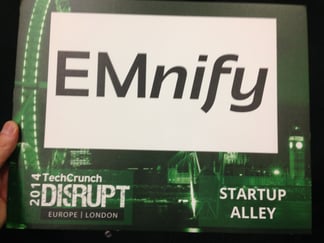
We knew that the future of IoT connectivity lay in the cloud, and with that came the expectation of a superior, cloud-like user experience. This ‘cloud-first, customer-first’ mindset has been our North Star ever since.
What is cloud-native?
At its core, cloud-native applications operate in an environment built for rapid innovation because developers can easily tap into a vast ecosystem of services and integrations. The heavy lifting of physical infrastructure management and patching is delegated to the cloud provider, while applications can utilize this capacity based on the current demand.
The advantage?
Built-in automation tools. These streamline processes from service creation to lifecycle management, capacity expansion, and even release upgrades.
Think of it like ordering food from a restaurant. Traditional human-centric communication offerings are akin to a set menu — limited, predefined choices. On the other hand, cloud-native offerings present a menu of ingredients, allowing you to craft a meal that perfectly aligns with your preferences, budget, and appetite. It's not just about consumption; it's about crafting an experience tailored just for you.
Cloud-first, customer-first: the emnify IoT SuperNetwork
True global IoT connectivity demands an entirely new approach. A new way of thinking. When we consider that there will be around 5.8 billion IoT connections worldwide in the next five years or so, it’s clear that a cloud-native network that offers seamless integration, a global presence, and transparency into the multiple layers of the communication stack is the only realistic way forward — a network like the emnify IoT SuperNetwork.
The emnify SuperNetwork delivers reliable, global connectivity with all the necessary features, but that’s the baseline delivered by most IoT connectivity providers today.
It’s nothing new.
Our SuperNetwork takes things a step further by being a locally integrated network that synergizes seamlessly with existing customer tools, portals, interfaces, and APIs.
Ownership is crucial in our strategy. We own the stack, from network access, SIM, and core network to portal and API. This gives us the agility to optimize for IoT rapidly and distinctly. 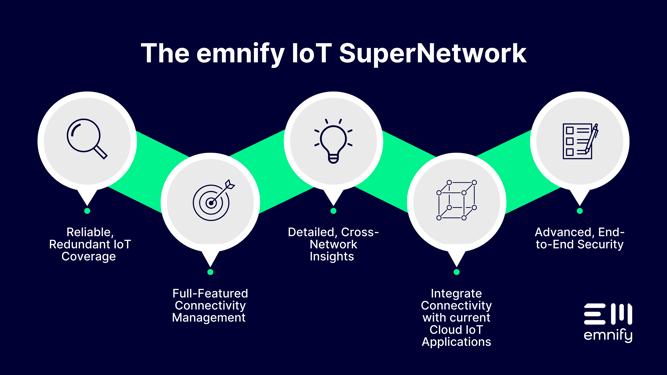
Our network access rests on dedicated IoT agreements, promising reliable and future-proof access to various networks and IoT radio access types around the globe. We’re equipped to provide our customers with local breakouts instantly, promising superior latency and regulatory compliance for their applications.
Seamless, simple integration into our customers’ cloud environments is achieved through our API-first principle and data streamer, delivering services in the way our customers want and need.
Embracing cloud-native advantages, our tech stack has real-time scalability and unparalleled availability. emnify is free from the burden of infrastructure management and maintenance, a common affliction among traditional mobile telco stacks. By breaking away from this rigid system entirely focused on value creation through human interaction, we can concentrate on what really matters — building new capabilities and services tailored for our customers.
The emnify team understands that our customers breathe cloud air, their operations are rooted in the cloud, their ideas thrive in the limitless expanse of the cloud’s unrestricted environment. Every layer of their stack, from the connectivity right up to the applications, is a modern, cloud-based solution. This cloud-forward thinking and approach is what distinguishes us.
The emnify experience is about delivering more — more efficiency, more flexibility, and more growth.
That’s the emnify way.
There’s no need to settle for less
Cloud-native is also the only realistic way to handle the load created by billions of devices. The SuperNetwork’s cloud-native architecture enables IoT businesses to overcome the limitations of traditional connectivity models, which are inflexible and expensive for IoT, prolonging time-to-market and time-to-revenue.
Those not providing IoT connectivity services like emnify will soon become obsolete. It’s not just about being the new kid on the block; it’s about transforming the entire neighborhood. It’s about dismantling the old, outdated ways in which things are done and ushering in a new era of IoT solutions.
Our journey has just begun, and I’m excited to have you join us as we transform IoT connectivity. In my next article, Martin and I will discuss how being a first-mover in the IoT space benefits our customers and creates a truly future-proof business in an industry that is constantly evolving.
Until then, I invite you to consider how a cloud-centric approach can transform your IoT operations. Let’s explore the power and potential of IoT connectivity together. If you’d like to talk more, please connect with me on LinkedIn.
Experience the power of the emnify IoT SuperNetwork
Every IoT use case is different, ranging from simple setups to complex global deployments. emnify offers flexible and scalable solutions that fit your needs.
Let's talk to discover how your business can leverage the power of the emnify IoT SuperNetwork.

Frank Stoecker
Frank Stoecker is CEO and co-founder of emnify. A successful serial entrepreneur and recognized telecoms expert for over 15 years, Frank anticipated early that the new wave of connected services demanded new concepts to simplify connectivity on a global scale. Prior to co-founding emnify, Frank held leadership positions at MACH and Syniverse.
